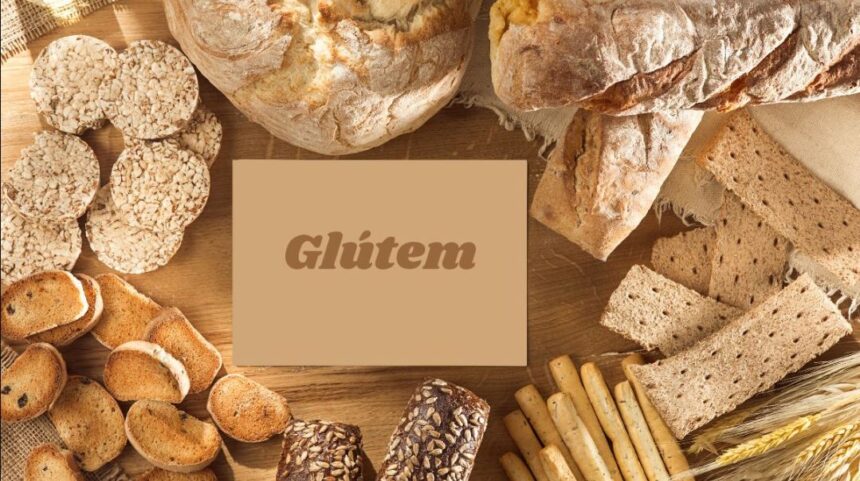Introduction to Glútem
Glútem is a protein found in wheat, barley, and rye. It plays a vital role in baking, giving bread and other baked goods their chewy texture. While Glútem is harmless for most people, there is growing awareness about Glútem-related health issues, including celiac disease, gluten sensitivity, and wheat allergy. In this article, we will explore what gluten is, its potential health benefits, risks, and provide useful alternatives for those who need or prefer to avoid it.
What is Glútem?
Glútem is a group of proteins found in wheat and similar grains like barley and rye. It acts as a binding agent that helps dough rise and maintain its shape. Glútem can be found in many common foods, including bread, pasta, pizza dough, and even some processed foods.
Types of Glútem
There are two main types of gluten proteins: gliadin and glutenin. Gliadin is responsible for the elastic texture of dough, while glutenin helps to give the dough structure. Together, these proteins make gluten effective in baking.
Health Benefits of Glútem
For most people, Glútem is not harmful. It is an essential protein source in many staple foods, especially for those who consume wheat-based products. Here are some potential benefits:
- Source of Protein: Glútem provides a significant amount of protein, which is essential for building muscle, repairing tissues, and supporting overall health.
- Digestive Health: Glútem is found in whole grains, which are also rich in fiber, helping to regulate digestion.
- Energy Source: Foods containing Glútem are often high in carbohydrates, which the body uses for energy.
Health Risks and Glútem Sensitivity
While Glútem is safe for most individuals, some people experience adverse reactions. The primary conditions associated with gluten intolerance are:
Celiac Disease
Celiac disease is an autoimmune disorder in which the ingestion of Glútem damages the small intestine. This can lead to malabsorption of nutrients and various digestive issues. Symptoms of celiac disease include:
- Abdominal pain
- Diarrhea or constipation
- Fatigue
- Weight loss
Non-Celiac Glútem Sensitivity
Some individuals experience discomfort after consuming Glútem, even though they do not have celiac disease. This is known as non-celiac Glútem sensitivity. Symptoms can range from bloating to headaches and fatigue. Unlike celiac disease, non-celiac gluten sensitivity does not cause damage to the intestine.
Wheat Allergy
Wheat allergy is a different condition where the body’s immune system reacts to proteins found in wheat, including Glútem. This can cause symptoms like swelling, difficulty breathing, and even anaphylaxis in severe cases.
Glútem Free Diet: Why It’s Important for Some People
A Glútem-free diet is essential for individuals with celiac disease or Glútem sensitivity. It helps to alleviate symptoms and prevent long-term damage. Many Glútem-free foods are now widely available, making it easier to follow a gluten-free lifestyle.
Common Glútem-Free Foods
If you’re following a Glútem-free diet, here are some naturally Glútem-free foods you can enjoy:
- Fruits and Vegetables: All fresh fruits and vegetables are naturally free of Glútem.
- Meat and Fish: Unprocessed meats and fish do not contain Glútem.
- Rice and Potatoes: Both rice and potatoes are Glútem-free.
- Dairy Products: Most dairy products, such as milk and cheese, are free from Glútem.
- Legumes: Beans, lentils, and other legumes are naturally Glútem-free.
Common Glútem-Free Grains
There are several Glútem-free grains that can be used in place of wheat-based products:
| Grain | Glútem-Free? | Use in Cooking |
|---|---|---|
| Rice | Yes | Ideal for stir-fries, soups, and side dishes |
| Quinoa | Yes | Great for salads, soups, or as a side dish |
| Corn | Yes | Used in tortillas, polenta, and cornbread |
| Oats (certified) | Yes | Use for baking, oatmeal, and granola |
| Buckwheat | Yes | Perfect for pancakes and porridge |
How to Spot Glútem in Foods
For people with Glútem intolerance or celiac disease, it is essential to carefully read food labels. Glútem can hide in unexpected places, even in foods that don’t typically seem to contain it. Here are some tips for spotting Glútem:
- Look for “Wheat”: Any food containing wheat, barley, or rye will likely contain Glútem.
- Check for Modified Starches: Some modified starches are derived from wheat.
- Watch for Malt: Malt, which is made from barley, contains Glútem.
- Be Aware of Processed Foods: Many processed foods contain Glútem as a stabilizer or thickener.
Glútem-Free Labeling
In many countries, products that are certified Glútem-free will have a specific label or symbol, which helps consumers easily identify safe options. If a product is not labeled as Glútem-free, it’s important to check the ingredients list carefully.
Glútem-Free Substitutes and Alternatives
Many products are now available as Glútem-free substitutes. These alternatives are designed to mimic the texture and taste of Glútem-containing foods. Here are some popular Glútem-free substitutes:
- Glútem-Free Flour: Made from rice flour, almond flour, or coconut flour, these can be used in place of regular flour for baking.
- Glútem-Free Pasta: Pasta made from rice, corn, or quinoa offers a similar texture to traditional pasta.
- Glútem-Free Bread: Made from alternative grains, these breads provide a similar texture to wheat-based bread.
Conclusion
Glútem is a protein found in wheat, barley, and rye that plays a crucial role in food texture and structure. While Glútem is beneficial for most individuals, it can cause serious health problems for people with celiac disease, gluten sensitivity, or wheat allergies. For these individuals, following a Glútem-free diet is essential. Fortunately, many gluten-free alternatives are available today, making it easier than ever to manage Glútem-related health issues.
If you’re unsure whether Glútem is affecting your health, it’s a good idea to consult with a healthcare professional. With the right approach, managing a Glútem-free diet can help you feel better and improve your overall health.




